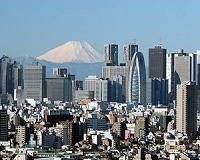 |
Sydney (AFP) March 24, 2011 Lights will go out around the world Saturday with hundreds of millions of people set to take part in the Earth Hour climate change campaign, which this year will also mark Japan's earthquake and tsunami. From across the Pacific, to Australia, Asia, Europe, Africa and the Americas, iconic landmarks such as the Burj Khalifa in Dubai, New York's Empire State building and the Eiffel Tower in Paris will go dark. "Earth Hour is like a New Year's Eve," Earth Hour co-founder and executive director Andy Ridley told AFP from the group's Sydney office. "It's meant to be a celebration -- it's a bit different this year because of the Japan stuff -- but it's meant to be about hope and the future." Ridley said in Sydney and other cities, some Earth Hour events would hold a minute's silence to mark the devastating 9.0-magnitude quake and subsequent tsunami in Japan this month that left more than 25,000 people dead or missing. The disaster followed a deadly earthquake in New Zealand's Christchurch and massive floods in Australia in January, which devastated thousands of homes and ruined crops and infrastructure. "It's been a bad start to the year, and I guess it's an opportunity to take a moment and think about that," Ridley said, adding that the campaign had a different focus in every location and not all events would mention Japan's catastrophe. The Earth Hour movement, which aims to raise awareness about climate change by switching off lights for 60 minutes, hopes to bring people together to think about what they can do to reduce harmful carbon pollution blamed for rising temperatures. Environmental group WWF International helped initiate Earth Hour in Sydney in 2007, and by 2010 the energy-saving event had grown to engage hundreds of millions of people in 4,616 cities and 128 countries and territories. "We didn't imagine right at the beginning... it would be on the scale that it is now," said Ridley. "And the fact that it is so cross-cultural, beyond borders and race and religion," he added, saying the event would never have grown so successfully without social networking sites such as Facebook. This year organisers are focussing on connecting people online so they can inspire each other to go beyond the hour and make commitments to help the environment in their daily lives. To do this they have created an online platform connected to the 14 top social media sites around the world, including Facebook and Twitter, which people will be easily able to access from mobile phones. Australian Prime Minister Julia Gillard this week backed Earth Hour. "Earth Hour has become a special symbol of the determination of so many people to make a difference," said Gillard, who is facing stiff opposition to her plan to introduce a tax on carbon pollution in Australia. Ridley said that despite the growth of the event, which organisers said was the largest voluntary action ever witnessed in 2010, the ideals of the global movement had not changed. "When we first started this we were trying to effectively take the temperature, we were trying to prove or see whether, contrary to some commentators, whether or nor people cared (about climate change)," he said. "I think there is a massive consensus for action, not just on climate change. "The idea of this is not to engage in the 'why we can't do anything' debate but absolutely talk about what can be done." The first lights going off Saturday will be in Fiji and New Zealand's Chatham Islands, before cities and landmarks around the world follow suit. Other iconic structures due to go dark include the Sydney Opera House, Indonesia's National Monument, London's Eye and Brazil's Christ the Redeemer statue.
Share This Article With Planet Earth
Related Links
 Saving Electricity In A Hurry-Tokyo Has Done It Before And Can Do It Again
Saving Electricity In A Hurry-Tokyo Has Done It Before And Can Do It AgainParis, France (SPX) Mar 24, 2011 Not long ago, Japan faced a major power crisis. In September 2002, the Tokyo Electric Power Company (TEPCO) was forced to shut down 17 nuclear power plants for emergency safety inspections. The winter of 2002-2003 was approaching, and the plants, which were expected to remain closed for months, would be unavailable through summer 2003, a time when demand from summertime air conditioning wo ... read more |
|
| The content herein, unless otherwise known to be public domain, are Copyright 1995-2010 - SpaceDaily. AFP and UPI Wire Stories are copyright Agence France-Presse and United Press International. ESA Portal Reports are copyright European Space Agency. All NASA sourced material is public domain. Additional copyrights may apply in whole or part to other bona fide parties. Advertising does not imply endorsement,agreement or approval of any opinions, statements or information provided by SpaceDaily on any Web page published or hosted by SpaceDaily. Privacy Statement |